How much screen time is good for preteens and tweens? Does your preteen or tween have a cell phone? A smart phone? Do you monitor what the child does on the phone? Do you have concerns about the child’s cell use?
There may be no time that produces more angst among twenty-first century parents than when their children are preteens and tweens. Preteens and tweens are learning to use their language to understand their world – and to argue with their parents. But they often don’t understand what they are talking about, even though they know the words. It’s as if the twenty-first century world, with all of its technology and access to information, has provided these kids with too much to know but not readied their brains to handle it. It does get better in adolescence, although the early teenage years may feature a continuation of your current concerns.
The opinions of professional educators, psychologists, and physicians about access and amount of screen time have changed dramatically in the past decade. Most experts have recognized that keeping preteens and tweens away from screens is a near impossibility but want to “limit the damage.” While we now recognize that screens are their portal to the future, we are legitimately concerned that they‘ll get stuck inside the gateway. One useful strategy to address these issues is to join with your preteens and tweens. Talk about technology. Encourage them to show you what they are doing and share an app you like. Talk about your concerns for yourself and other adults about being overwhelmed by media. Recognize the good along with these concerns.
Our view at LearningWorks for Kids is that preteens and tweens need to focus primarily on physical, social, and academic play. At this age they will be defining their own interests, so our game and app recommendations are for widely loved games that you could play with them and for apps that might help with their new demands at school. Here are some of our favorite apps for preteens and tweens:
To learn more about how to make screen time into a beneficial experience for preteens and tweens, check out my book, Playing Smarter in a Digital World and be on the lookout for my newest book, Too Much Minecraft.
These are some of the best apps that preteens can master and use to help them at school and to learn most effectively:
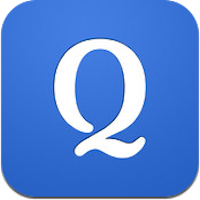 Quizlet is a customizable study tool available in both web and app form. Users create customizable “sets” using terms and definitions relating to virtually any subject. Quizlet provides a number of teaching tools to transform these sets into flashcards, quizzes and tests, or mini-games designed to familiarize users with their study terms. Users can create their own “sets” inputting terms and definitions, or search for subjects already created by students and teachers from around the globe. For an additional fee, teachers and students can upgrade Quizlet to better fit their needs. Upgrades provide additional tools, remove ads, and allow for an unlimited number of created “classes” and “sets.” This app is a great way for students to prepare for a test, brush up on past material, or learn new material quickly and effectively through repetition and demonstration of knowledge. Quizlet is easy to use for both teachers and students and is recommended to any user ages 4 and up.
Quizlet is a customizable study tool available in both web and app form. Users create customizable “sets” using terms and definitions relating to virtually any subject. Quizlet provides a number of teaching tools to transform these sets into flashcards, quizzes and tests, or mini-games designed to familiarize users with their study terms. Users can create their own “sets” inputting terms and definitions, or search for subjects already created by students and teachers from around the globe. For an additional fee, teachers and students can upgrade Quizlet to better fit their needs. Upgrades provide additional tools, remove ads, and allow for an unlimited number of created “classes” and “sets.” This app is a great way for students to prepare for a test, brush up on past material, or learn new material quickly and effectively through repetition and demonstration of knowledge. Quizlet is easy to use for both teachers and students and is recommended to any user ages 4 and up.
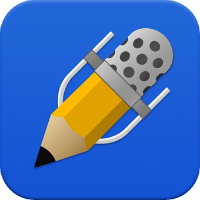 Notability is a note-taking app that lets users take handwritten or typed notes and record audio while notes are being taken — perfect for jotting down the highlights of a class lesson. Better yet, the app automatically syncs notes with the corresponding audio, making it easy to organize information and find what you need. Users can title their notes and organize them into categories such as “Algebra,” “History” and “Homework,” and even add in photos and “sticky notes.” Notability can upload notes to the cloud, allowing users to share notes via services such as DropBox and Google Drive. For a more customized feel, users can combine a range of fonts, colors and paper designs, making it easy to create style preferences for a variety of subjects and notes. The app is relatively easy to use, but requires basic reading and writing skills. Though geared towards older children, Notability can be a great tool for introducing basic organizational and note-taking skills to younger students, making the app recommended for use with kids ages 10 and up.
Notability is a note-taking app that lets users take handwritten or typed notes and record audio while notes are being taken — perfect for jotting down the highlights of a class lesson. Better yet, the app automatically syncs notes with the corresponding audio, making it easy to organize information and find what you need. Users can title their notes and organize them into categories such as “Algebra,” “History” and “Homework,” and even add in photos and “sticky notes.” Notability can upload notes to the cloud, allowing users to share notes via services such as DropBox and Google Drive. For a more customized feel, users can combine a range of fonts, colors and paper designs, making it easy to create style preferences for a variety of subjects and notes. The app is relatively easy to use, but requires basic reading and writing skills. Though geared towards older children, Notability can be a great tool for introducing basic organizational and note-taking skills to younger students, making the app recommended for use with kids ages 10 and up.
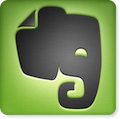 Evernote is an easy-to-use organizational app available for note taking and archiving. Evernote boasts a streamlined, well-structured interface that allows users to make as many notes as they want (using both text and images), sort these notes into notebooks, and then further organize their content with tags. Finished notes can then be uploaded and shared on platforms like Twitter and Facebook. Evernote also includes Skitch, a program that enables users to edit or annotate any pictures they take. Evernote is a very user-friendly program, but does require some reading and writing skills, and is therefore recommended for children ages 8 and up.
Evernote is an easy-to-use organizational app available for note taking and archiving. Evernote boasts a streamlined, well-structured interface that allows users to make as many notes as they want (using both text and images), sort these notes into notebooks, and then further organize their content with tags. Finished notes can then be uploaded and shared on platforms like Twitter and Facebook. Evernote also includes Skitch, a program that enables users to edit or annotate any pictures they take. Evernote is a very user-friendly program, but does require some reading and writing skills, and is therefore recommended for children ages 8 and up.
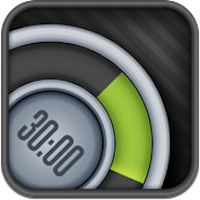 30/30 is an app designed to help users manage their time effectively and stay on task. The app facilitates the creation of timed and categorized tasks to help users keep track of how long they have dedicated to a particular project and when it is time to move on or take a break. Users can generate multiple task lists, which have the ability to run in a loop for projects that are repeated often. Additional features include vibrating and audible alerts when a task timer runs out, as well as intuitive touch and swipe features for adding and editing new tasks and categories. This app contains no inappropriate or adult content and is easy to use for anyone ages 6 and up.
30/30 is an app designed to help users manage their time effectively and stay on task. The app facilitates the creation of timed and categorized tasks to help users keep track of how long they have dedicated to a particular project and when it is time to move on or take a break. Users can generate multiple task lists, which have the ability to run in a loop for projects that are repeated often. Additional features include vibrating and audible alerts when a task timer runs out, as well as intuitive touch and swipe features for adding and editing new tasks and categories. This app contains no inappropriate or adult content and is easy to use for anyone ages 6 and up.

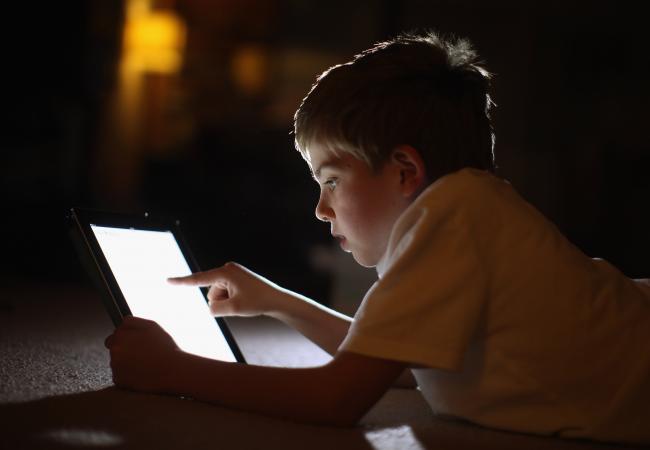



Being a 90 kind I know how much is important for kids to play physical games rather than sit at home and playing games and watching videos as a father I spend tons of time with my kids we go to park take walk every weekend playing football together
The content of your article page is very good, I find the content is quite good and helpful to me, thank you for sharing.